"We need to think carefully about the nature of the world economic juggernaut and the lines it threatens. The juggernaut is not just a consumer and transformer of resources. It is the latest stage of modernity, and modernity is a line drawing machine." 1
—Dan Brockington, Rosaleen Duffy, and Jim Igoe
The Theatrum
Lauded for its unprecedented rigor and organization, Abraham Ortelius' Theatrum Orbis Terrarum (Epitome of the Theater of the World), the world's first modern atlas, was published in 1570 in Antwerp and quickly became a best seller. Giving Europeans a definitive shape to an otherwise anecdotal and imaginary new world, the Theatrum drew its power and authority from mapping's implicit association with accuracy and objectivity, in a word, truth. But as history attests, maps are notorious liars.
In any event, the Theatrum's frontispiece gives the game away. Five female figures make up the scene: civilized Christian Europa sits atop, Africa and Asia seductively decorate the flanks, and the naked Americas is reclining in relative darkness below, holding the cannibal's trophy, a decapitated head. A bust of a 5th figure representing ('virgin') lands not yet discovered is to Americas' right.

While much of the world was known in crude outline by 1570, 'the great south land' (Australia) which the Greeks rightly thought must exist so as to balance the world, remained hypothetical, as did most of the interiors of Asia, Africa and the Americas. We now know that where Ortelius saw voids, indigenous people the world over knew and had already mapped these interior landscapes intimately. Indigenous Australians, for example, had been mapping that continent in both word and image for millennia, and yet upon their 'discovery' of it in 1788, the British conveniently described it as terra nullius (literally, a land devoid of people).
It is generally estimated that the pre-urban world sustained around four or five million nomads. Their small populations, light-footedness, benign technologies, and animist theologies resulting in the comparatively steady environmental state we now idealize as 'sustainability'. The agricultural revolutions (occurring more or less simultaneously circa 10,000 BC in the flood plains of the Tigris, Euphrates, Indus, and Huang He rivers) however, began a much more intensive land-use dynamic that continues to this day. As villages and later cities incubated larger populations, the radius of land clearance and food production necessarily expanded, so much so that the foodbowls of the 21st century now practically reach to the ends of the earth.
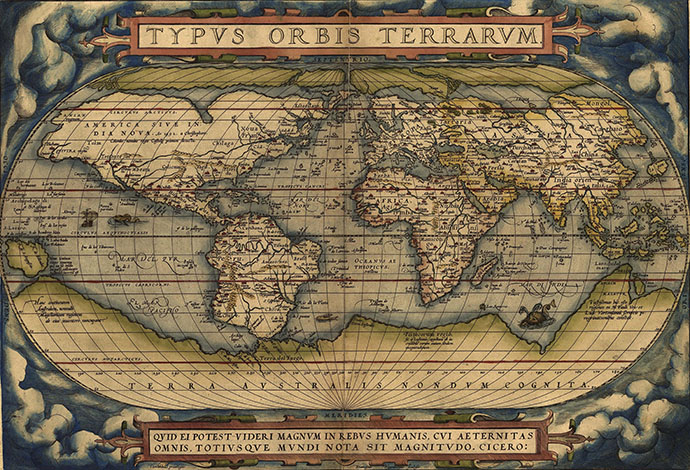
In 1570, when Ortelius published his atlas, the European imagination could literally run wild with whatever might be 'out there'. Now, a mere 450 years later, that vast, mysterious world of diverse peoples and species is completely colonized and irreversibly altered by the material and conceptual forces of modernity. Whereas Ortelius marked out modernity's territorial beginnings, this atlas—by focusing on the remaining habitat in the world's 36 biodiversity hotspots —rakes over its remains.2
When we began this research in early 2013, the world's terrestrial and inland waters protected area total was hovering at 13.5% of global terrestrial area. More recent figures suggest a total of around 15.4%; that is, 20,600,000 km2 across 209,429 different sites, in 235 different countries3. This means that to reach the United Nations Convention on Biological Diversity (CBD) Aichi target 11 of securing 17% terrestrial protected area by 2020, an additional 1.6% of global terrestrial area needs to be secured under the International Union for the Conservation of Nature's standards.4 This amount might, on first impression, seem paltry but 1.6% of the earth's terrestrial surface is 2,327,800 km2, the equivalent of 695,835 Central Parks. That's Central Park with a length of 2,783,343 km (at 0.8 km wide) stretching 70 times around the world! This atlas is intended as a guidebook for the determination of where this land should be.
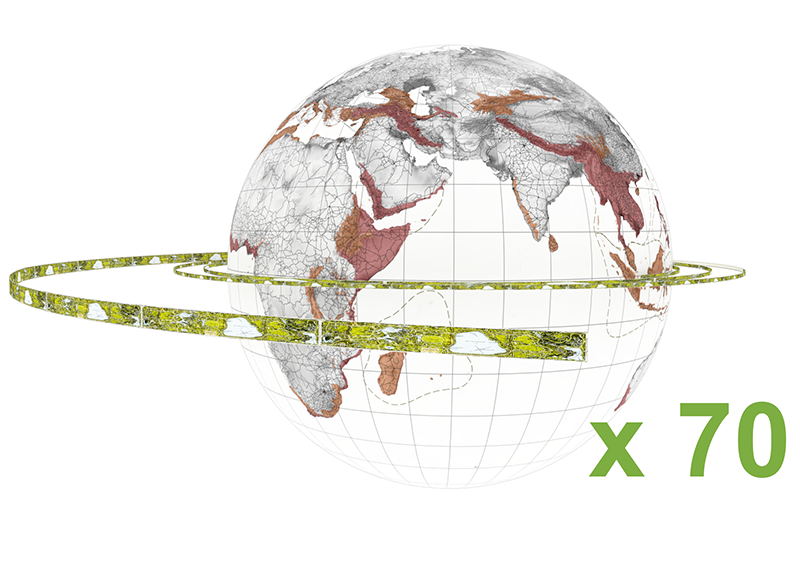
The Civitates
Before explaining how this Atlas for the End of the World works, there is another we must firstly acknowledge. Published two years after the Theatrum in 1572 and conceived as a companion to it was the Civitates Orbis Terrarum, a six-volume atlas of 450 (almost entirely European) cities edited by George Braum and engraved by Frans Hogenberg. The Civitates was a taxonomy of medieval and renaissance urbanism — a world without what we now refer to pejoratively as 'sprawl'.
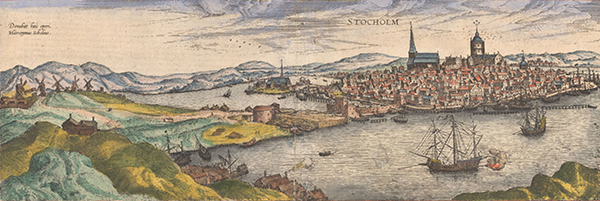
Walled in and gathered tightly around their waterways, all the cities in the Civitates cling closely to the contours of what appear to us now as idyllic agrarian landscapes. In deference to their cathedrals, all the buildings in these cities huddle together and lie low. While all these cities looked inward and upward, as the architect Rem Koolhaas explains in his foreword to the 2008 reprint, they in fact stood unwittingly at the edge of the "chaos the centrifugal forces of globalization would unleash" in the 16th century.5 Half a millennium after the original publication of the Civitates, Koolhaas now writes that "our cities have become monstrous, too endless to represent, endlessly complicated [and] largely dysfunctional."6 Koolhaas might have added that in their current form they are also ecologically self-destructive.
Whereas the Civitates depicted cities as objects set against nature's backdrop in this Atlas for the End of the World we document cities and their ecoregions, suggesting that what was formerly 'city' and 'country' is now a continuous (yet uneven) global territory. Apart from some of those in the Mediterranean Basin hotspot, very few of the 423 cities documented in this Atlas were in the original Civitates. Our maps of these cities project their likely growth trajectories forward to 2030, showing that an overwhelming majority of them will probably continue to sprawl into their host landscapes.
And one needs to appreciate the scale of this imminent urban growth. If say an extra 3 billion people move into cities by 2100 (as is entirely likely) it means we need to build 357 New York Cities — 4.25 per year to the end of the century! Much of that growth will occur in the subcontinent and in Africa and South and Central America; much of it up against biodiversity.
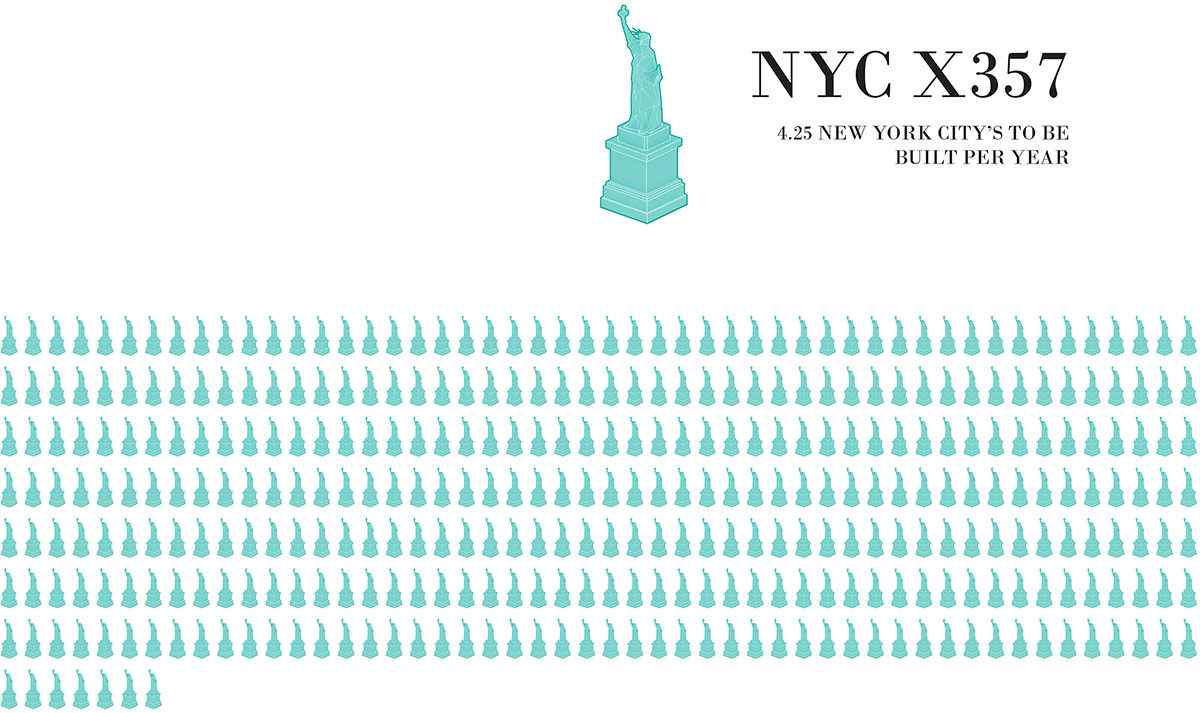
The bloody frontline of the 6th extinction is often in remote landscapes but we can no longer think of biodiversity as only 'out there'. Tied together in complicated feedback loops, 'city' and 'landscape' are reciprocally the cause and effect of the global ecological crisis. As such, conservation is an issue that cuts from the cores of our densest cities to the furthest wilds.
Although it is not yet well monitored, it is increasingly appreciated that the metabolism of the contemporary city, no matter how divorced it might feel, is interconnected with the sources and sinks of the broader landscape. It follows then that environmental stewardship is as much a matter of urban design as it is landscape ecology. As Herbert Giradet insists, it is in cities "that human destiny will be played out and where the future of the biosphere will be determined. There will be no sustainable world without sustainable cities".7
In this, the age of urbanization, researchers and organizations committed to conservation are necessarily starting to treat biodiversity and urbanity as coupled subjects under the rubric of urban ecology. For example, the conclusion to the recent Global Assessment of Urbanization, Biodiversity and Ecosystems Services Report stresses that cities are central to the larger agenda of environmental stewardship: "[A]s centers of human innovation, and perhaps the most active frontier of our impact on the planet in shaping its landscapes and seascapes, cities offer arenas for enormous opportunities to reimagine and invent a different kind of future with room for humans and other species to thrive. Cities may well be the ground where we secure a globally sustainable future—one that builds on nature-based solutions and ecosystem-based adaptation, and establishes responsible environmental stewardship at the heart of public interest."8
The conversion of cities from wasteful, destructive machines to ecologically sophisticated organisms is surely one of the greatest creative challenges of the 21st century and beyond, but to do this, the city must be conceived of and analyzed not as an object set against nature's backdrop but as a bottleneck in local, regional and global ecological flows.
Writing in 2011, theorists of global urbanization Neil Brenner and Christian Schmid describe that which for Koolhaas was "too endless to represent" as "planetary urbanization".9 As they explain it, this means "that even spaces that lie well beyond the traditional city cores and suburban peripheries — from transoceanic shipping lanes, transcontinental highway and railway networks, and worldwide communication infrastructures to alpine and coastal tourist enclaves, 'nature' parks, off shore financial centers, agro-industrial catchment zones and erstwhile 'natural' spaces such as the world's oceans, deserts jungles mountain ranges, tundra, and atmosphere-have become integral parts of the world wide urban fabric."10
This conception of contemporary global urbanization emerges from, and bears witness to, the dissolution of the longstanding boundary between city and country, a boundary that the engravings in Braum and Hogenberg's Civitates so assiduously trace. With the dissolution of this urban-rural-wilderness transect the dualism of culture and nature which had provided Cartesian modernity with its ontological raison d'être, also dissipates. Consequently, in the late 20th and early 21st century 'nature writing' has been replaced by 'end of nature' writing.11
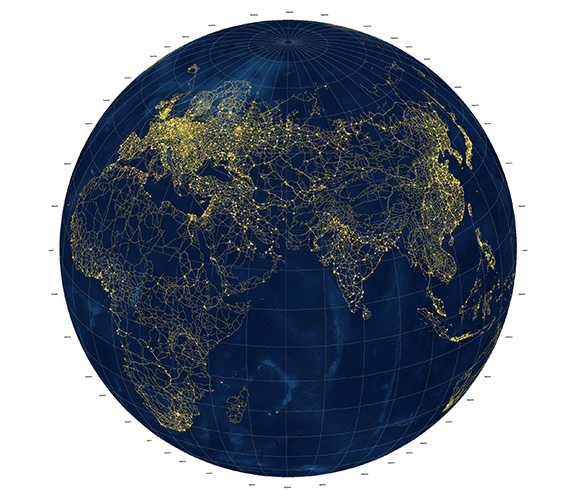
Nature?
The Nature that this recent writing says has ended is modern nature, that is, nature variously apprehended as an inert resource, a God given machine, an expression of the Fall, or as a picturesque backdrop to human affairs— nature as other. Post-modern nature, that is, the nature of the Anthropocene is one now convulsing with the perturbations of climate change. Variously dead, ended, chaotic, resilient, cyborgian, irreversible, disinterested, victimized, vengeful, and nostalgic, the nature of the Anthropocene is not agreed upon and not yet well known. As historian Christophe Bonneuil explains, the post-nature narrative is paradoxical because: "[i]t challenges the modern conception of freedom as an escape from nature and its limits…but in refashioning nature as a flexible hybrid amenable to further market and technological deconstruction and reconstruction, the post nature narrative intensifies and accelerates modernity. It constitutes the new spirit of modernity."12
Momentously, no matter which way we look at this new nature we now see ourselves. This self-image is terrifyingly ambiguous; for if human consciousness can indeed change the course of natural history as the Anthropocene suggests, then mere mortals have indeed become Gods. But what kind of Gods are we? Gods who survey their toxic, murderous garden with satellites yet know neither what they themselves are, nor the value of the things they lord their power over?
Apart from various mystical accounts on the one hand, and scientific descriptions on the other, we have no certainty as to what nature means or what its value is. As E.O. Wilson explains, "[h]umanity doesn't need a moon base or a manned trip to Mars. We need an expedition to planet earth, where probably fewer than 10 percent of the life forms are known to science and fewer than 1 percent of those have been studied beyond simple anatomical description and a few notes on natural history."13
In their remarkable book, Dazzle Gradually: Reflections on the Nature of Nature, Lynn Margulus and Dorian Sagan capture the current moment: "[p]erhaps another Greek myth, better sums up the present philosophical (Gaian) situation: Once narcissus stood and eyed the still waves that reflected his own image. He had never seen himself before. He became infatuated. And now we gaze in the looking glass of satellite imaging technology. Again we see the water. Again…but what is 'ourselves'? And who_ or what_ is this body?"14
The achievement (if one can put it that way) of fundamentally altering the earth-system comes in many forms, but carbon emissions are the most topical and consequential. Having now pumped roughly an additional 525 billion tons of carbon into the earth-system since 1870 humanity finds itself on evolutionary par with cyanobacteria (single celled bacteria) which, over the course of some two billion years, converted a hydrogen rich atmosphere to oxygen and in so doing brought about their own demise. The difference between cyanobacteria and us, however, is that we know what we do. Even so, is not easy to find an ecological morality tale in the case of cyanobacteria for their suicide led to life's munificence as we know it, and perhaps ours will too.

Prosaically, we do know that in the relatively short time we have on earth as a species (no species lasts more than approximately 2 million years), we will not live well or even survive that long in a world that is not biodiverse and able to provide the 'ecosystem services' we have until recently taken for granted. We also know that after major extinction events such as the one we are now perpetrating, life takes many millions of years to recover its pre-disaster diversity. Typically, life recovers because the disaster which caused the initial reduction in diversity is short lived. This, however, is not the case with the 6th extinction. We don't let up.
The dominant narrative upon which conservation's global mandate rests is therefore one of immanent ecological catastrophe. In this tragedy, humanity is cast as a destructive force in an otherwise harmonic environment. In this account nature is right and humanity is wrong and as such clear moral lines can be drawn. It is however possible to think that the nature, of which we are now undeniably a part, is in itself as destructive as it is creative, the one necessary to the other. Similarly, the new paradigm in ecology, as ecologist Robert Cook explains, is one in which the ecosystem is understood as inherently chaotic and humans increasingly accepted as a 'natural' albeit currently destructive part of both its history and its future.15
Optimistically, as neither destroyers nor saviors we can begin to re-imagine ourselves as participants in, and perhaps managers of, endless ecological change. As Jedidiah Purdy writes, "[t]he question is no longer how to preserve a wild world from human intrusion; it is what shape we will give to a world we can't help changing."16 Michael Soule, the founder of the Wildlands Network17 brings Purdy's point full circle, explaining that "when we choose the kind of nature we will live with, we are also choosing the kind of human beings we will be. We shape the world, and it shapes us in return. We are the creator and the created, the maker and the made."18 Zuzanna Drozdz, a student of landscape architecture at the University of Pennsylvania puts it perfectly when she writes: "by making a cultural decision to embrace, protect, and engender an ecologically robust, biodiverse world, we start to build a new identity for ourselves as a constructive force in nature."19
Stewardship?
The mapping that shows human modification of the global landscape best is that of 'anthromes' by University of Maryland geographer Erle Ellis and his colleagues. Anthromes classify landscapes according to their types of human modification.20 Through his maps and more emphatically his writing, Ellis argues that the "[r]ecognition of human beings' huge and sustained influence is now leading to a wholesale rethinking of ecological science and conservation that moves away from humans as recent destroyers of pristine nature and towards humanity's role as sustained and permanent stewards of the biosphere."21 We must, he continues, now work toward "maintaining, enhancing and restoring the ecological functions of the remnant, recovering, and managed novel ecosystems formed by land use and its legacies within the complex, multifunctional, anthropogenic landscape mosaics that are the predominant form of terrestrial ecosystems today and into the future."22
In a world where manipulating the chemical composition of the atmosphere and the oceans is being seriously countenanced as a response to climate change, Ellis' deployment of 'stewardship' to describe human agency seems quaintly pastoral. The expressions geoengineering and geodesign — the former defined as the "deliberate modification of the earth-system on a global scale"23 and the latter relating to the utilization of Global Information Systems as a platform for land-use planning — are closer to what he really means.
The vision of a geoengineered world finds its apotheosis in the so called "Eco-modernist Manifesto" that Ellis and his network of colleagues launched in association with the Breakthrough Institute in 2015.24 The manifesto envisages and promotes the conscious creation of a "good Anthropocene" which its authors expect to emerge sometime this century through a process of "decoupling" humanity's negative impacts from the environment via the agency of ever-advancing technology. This, the authors declare, will result from the intensification of historical processes already well underway; namely urbanization, hi-tech agriculture, the transition to renewable energy, and eventually the stabilization of global population. By understanding and promoting these emergent processes the eco-moderns believe "humans have the opportunity to re-wild and re-green the Earth — even as developing countries achieve modern living standards, and material poverty ends."25

The eco-modernists never explain how we would decouple our otherwise deeply entangled world and on the face of it decoupling seems to reinforce rather than reimagine the historical dyad of nature and culture that lies at the root of the environmental crisis. But to take decoupling so literally (the city here and wilderness there) misreads the eco-modernist landscape; for what they mean is that technology should continue to penetrate into all aspects of nature whilst also recognizing that large tracts of land must be set aside for the provision of ecosystems services. The 'rewilding' the eco-modernists refer to doesn't mean that we fence off territory and walk away; on the contrary, the rewilded landscape — as projects such as the Oostvaaderplassen in Holland (or for that matter any national park) show-is highly curated.
Whether the 17% terrestrial protected area envisaged by the Convention on Biological Diversity is sufficient to bring about an eco-modernist arcadia, or whether E.O. Wilson is right to demand that half the planet be set aside for biodiversity is moot, but amidst increasingly shrill and negative forecasts for a world sliding inexorably into climate change chaos, the sheer optimism of the eco-modernist manifesto is somewhat refreshing.26 In the light of history, however, particularly that of modernity itself, its techno-utopianism is also oddly naive.
Critics of eco-modernism such as Australian Professor of Ethics, Clive Hamilton see geoengineering as simply scaled-up versions of the very attitudes and practices that got us into this crisis in the first place. As Hamilton explains it the "ecomodernists welcome the new epoch as a sign of man's ability to transform and control. They see it not as evidence of techno-industrialism's essential disregard for environmental impacts, nor of humankind's short-sightedness or greed; instead, it is an opportunity for modern humans to prove their ingenuity."27 Hamilton's deepest issue with the eco-moderns is not just that they still believe in modernity but rather that they have failed to appreciate that the Anthropocene is not a continuation of history, but a fundamental and profound rupture with it. For Hamilton then the "battle lines of [the Anthropocene] have been drawn. On the one side are those who plan to force Gaia into total submission; on the other are those who believe attempting to do so is the ultimate folly."28 And yet, the question for Hamilton must then be; if we reject the ecological and the modern in the way the eco-modernists are putting the two together, what can we imagine instead?
James Lovelock, whose original 'Gaian' theory of life has done much to popularize eco-modernist sensibilities, is also circumspect: "[i]t takes a lot of hubris to even to think of ourselves as stewards of the earth. Do we want the remote and infinitely difficult task of managing the earth? Do we want to be made accountable for its health…? I would sooner expect a goat to succeed as a gardener than expect humans to become stewards of the earth. There can be no worse fate for people than to conscript them to such a hopeless task."29 Lovelock's description of stewardship's impossibility is a dystopian ploy to shock us into temperance so as to avoid further climate change. Shifting the metaphor from engineering to medicine, Lovelock does express some faith in human agency when he writes that in order to solve our global problems "we need a general practitioner of planetary medicine."30 Along with environmental scientists, conservationists and all those who love and know their land these general practitioners are known as landscape architects.

Landscape Architecture
In the form of gardens, landscape architecture has produced some of history's most beautiful mediations between culture and nature. For example, Villa d'Este outside Rome, Vaux le Vicomte outside Paris, Stowe in Buckinghamshire, the Summer Palace in Beijing and Royan-ji in Kyoto all express humanity's deepest desires for spiritual and physical communion within the natural order of things. As the British liked to think, such works of art 'improved nature', and within the confines of the aristocratic estate or the scholarly retreat, they arguably did but when unleashed from such enclaves and motivated by profit, the notion that nature could be improved has had devastating consequences for the peoples and ecosystems it was cast over.
Since the industrial revolution, landscape architecture has made its peace with the world primarily through the provision of public space for congested urban populations, the pièce de résistance being Central Park in New York City (1858). Its author, Frederick Law Olmsted (1822-1903), along with Calvert Vaux, (1824-1895), not only imported landscape into urban environments across the United States, but also did much to preserve it beyond. By virtue of creating faux nature inside the city and advocating for national parks outside, the alarming despoliation of modern industrial culture could, he hoped, be compensated for. As one of its first commissioners, Olmsted was central to the creation and 'design' of Yosemite National Park. Along with Yellowstone, Yosemite became an influential precursor to the idea of protected areas as places where pristine nature is venerated and human activity restrained, if not entirely removed.
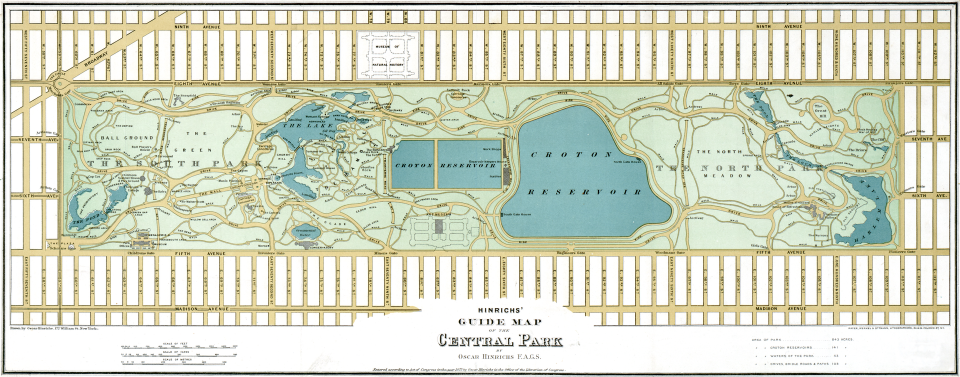
The discipline and profession of Landscape architecture assumed a global mandate and mission of stewardship in 1969 when its leading academic, Ian McHarg, Chair of Landscape Architecture at the University of Pennsylvania, published his manifesto Design With Nature. In it McHarg declares that: "[i]f one can view the biosphere as a single superorganism, then … man is an enzyme capable of its regulation, and conscious of it. He (sic) is of the system and entirely dependent upon it but has the responsibility for management, derived from apperception. This is his role–steward of the biosphere and its consciousness."31
Railing against Judeo-Christian narratives of dominion and capitalist exploitation, McHarg developed a method of mapping the biophysical characteristics of landscape so as to determine the most suitable land-uses for it. The method he developed brings the layers of landscape ecology (geology, soils, hydrology, vegetation, etc.) to the fore as the primary determinants of the type and form of land-use. This layered mapping and analysis is now practiced routinely through Geographic Information System (GIS) applications as a mechanism for guiding development decisions. With such tools landscape architects are skilled at analyzing places and creating scenarios for alternative futures in which the cultural and ecological landscapes would function more synergistically together. At least that's the theory.
In reality, while GIS related planning techniques (geodesign) enable the broad-scale, instrumental application of global conservation values, such top-down methods lack the specificity necessary to truly ground those values in the dynamic and highly nuanced ecological and cultural complexity of real places. To achieve such holistic efficacy, McHarg's "good steward" has to become deeply immersed in a given place, or at least work closely with people who are.32 In other words, the global overview of the planner or the conservationist is nothing without the grassroots knowledge of the gardener.

Gardening
McHarg struggled against the trivialization of landscape architecture as glorified gardening, but the biologist Daniel Janzen uses the metaphor of the garden to good effect when he argues that wildlands should now be conceptualized as such. For Janzen the metaphor of the garden is useful, not as a Judeo-Christian allegory, but because it shifts the conceptual frame of wildlands out of "exclusion unto extinction" as he puts it, and places them into the domestic, working landscape.33 For Janzen, this confers on wildlands all the "care, planning, investment, zoning, insurance, fine-tuning, research, and premeditated harvest" that we associate with the practice of gardening.34 By way of example, the Área de' Conservación Guanacaste in Costa Rica which he and his partner Winnie Hallwachs have devoted their lives to building is now a 165,000 hectare oasis of thriving biodiversity.35 Under their care and with the support of the local community, this land has not just been protected, it has been gardened back to life.
Janzen's 'garden' is not an idyllic scene constructed for contemplation, nor does it trade in images of pristine wilderness. Wildland "gardenification" as he refers to it, is just damn hard work. As Janzen explains, it involves "fencing, planting, fertilizing, tilling and weeding … bioremediation, reforestation, afforestation, fire control, proscribed burning, crowd control, biological control, reintroduction, mitigation and much more."36 Janzen's garden is a continual work in progress. The Área de' Conservación Guanacaste is not a pristine piece of wilderness simply set aside and policed, rather it is a landscape that has been constructed over time through tradeoffs and negotiations with its otherwise incompatible neighbors. The incorporation of local communities in the monitoring and management of the property is also vital to the economic sustainability and ultimately the biological success of the project.
Janzen's garden epitomizes the end of a certain scientific and romantic idealization of ecosystems as inherently inclined toward equilibrium and best kept free of humans. In this way it is both a model for actively managing existing protected areas as well as for how we might create new conservation areas within the landscapes of the Anthropocene, landscapes which are invariably loaded with competing interests. Janzen is first and foremost a biologist but he has described this remarkable project as "a de facto act of landscape architecture."37
There is much in contemporary (corporate) conservation that Janzen doesn't like, but it is more than a coincidence that Peter Karieva—former Chief scientist for the Nature Conservancy and advocate for working with the corporate sector—also deploys the garden as a metaphor for contemporary conservation practices. Nature, writes Karieva, "could be a garden — not a carefully manicured and rigid one, but a tangle of species and wildness amidst lands used for food production, mineral extraction, and urban life."38 Intentionally conflating land uses hitherto thought incompatible, Karieva conjures a future conservation landscape that is integrated with the economic landscape. He argues that conservation that is about "fences, limits, and far away places only a few can actually experience is a losing proposition."39 Instead, just as McHarg does, Karieva sees the contemporary landscape as a design and planning problem: "[c]onservation should seek to support and inform the right kind of development — development by design, done with the importance of nature to thriving economies foremost in mind."40 Riling deep ecologists, Karieva goes further, asserting that "[i]nstead of scolding capitalism, conservationists should partner with corporations in a science-based effort to integrate the value of nature's benefits into their operations and cultures. Instead of pursuing the protection of biodiversity for biodiversity's sake, a new conservation should seek to enhance those natural systems that benefit the widest number of people, especially the poor."41
So as we imagine Karieva's conservation landscape of the future, we must indeed ask: where are the poor in this image? Where are all those that modernity has thus far so thoroughly failed? Can they be, and will they want to be put to work on projects of global ecological restoration…while robots work the factories and the farms?
For landscape architects at least, Karieva is opening the door through which they can collaborate with ecologists, conservationists, local communities and developers to design and plan more diverse and productive landscapes. For others, Karieva is dancing with the (neo-liberal) devil and abandoning conservation's most sacred sites — protected areas. Technology and human nature are never quite as rational or benign as the eco-modernists and Karieva might hope, but the belief that human agency can be a constructive rather than destructive part of nature is surely the philosophical prerequisite for new material practices. This is precisely what McHarg meant by 'design with nature', it is what Lovelock means by a practice of 'planetary medicine', and what Janzen means by 'gardenification'.
Protected Areas
In 1970, just as Ian McHarg's Design with Nature hit the shelves there was a global total of 2.5 million km2 of protected area.42 In 2014, the United Nations Environment Programme's Protected Area Report recorded a grand total of 32.6 million km2 (20.6 million km2 of terrestrial and 12 million marine).43 In 1962 there were 9,214 protected areas, in 2014 there were over 209,00.44

Under the rubric of the International Union for the Conservation of Nature (IUCN), the major conservation NGO's; Conservation International (CI), The Nature Conservancy (TNC), The World Wildlife Fund (WWF), The African Wildlife Foundation (AWF) and The Wildlife Conservation Society (WCS), along with their local partners and networks of donors can duly take credit for creating this extraordinary global estate. Although some of these are allegedly just 'paper parks', the huge increase in protected areas and the galvanizing role played by the Convention on Biological Diversity (CBD) provides hope that humanity can work collaboratively on a scale commensurate with the global scale of the ecological crisis.
It is important to note that protected areas are not all one and the same. Furthermore, roughly 35% of the number of global protected areas have not adapted the IUCN management classification system. Ranging in type from "strict nature reserve" to "protected area with sustainable use of natural resources" there are seven different categories of protection applied by the IUCN.45 Despite this diversity, protected areas are generally seen by their critics as "fortress conservation" reinforcing an anachronistic nature-culture polarity. For example, Dan Brockington, Rosaleen Duffy, and Jim Igoe warn about "[u]ndue attention to wilderness risks blinding people to the value of used and modified lands. It also promotes an ethic in which the only landscapes worth saving are those that are distant and exotic, while landscapes that are proximate and mundane appear unworthy of our concern."46
The problem is not only that protected areas tend to reinforce a nature-culture polarity by literally taking a certain form of nature out of our world, it is also that neo-liberal economic interests are inversely, now taking that nature into theirs. In what Bram Büscher, Wolfram Dessler, and Robert Fletcher describe so succinctly as 'Nature™ Inc.', capitalism is finding new and not yet well understood ways of commodifying and profiteering from nature as a global service provider.47 As they explain it, Nature™ Inc. "sells novel relations between humans and nonhuman natures…[t]his frontier traverses and connects the boardrooms of global hedge funds, trees owned by small farmers, consumers, interest groups, giant nature reserves, and a myriad of species (both human and non human) trying to survive in changing ecologies. It boasts grand images of pristine landscapes connected to often contradictory material realities and consequences leaving some actors struggling to access new markets and others dispossessed by various 'green grabs.'"48
As with any historical reworking of the concept of nature the reorganization of land-use boundaries follows and uneven power relations are inscribed. Whilst conservation cannot, as its critics point out, escape socio-economic accountability just by virtue of its valorization of 'nature' if a neo-liberal conservation landscape has a lower species extinction rate than its extractive predecessor, then surely a neo-Marxist critique of "conservation as development" is not so straightforward.49
Other more strident criticism of protected areas identifies the inherent power imbalance in the relationship between the big international nongovernment organizations (BINGOs) and indigenous minorities whose livelihoods and spiritual well-being are dependent on access to biodiversity. In his selective history of global protected areas, investigative journalist Mark Dowie brings a litany of complaints against the BINGOs for the ways in which their practices have overridden and in certain cases led to the eviction of local indigenous peoples from their homelands.50
Involving complex constituencies in often poor, corrupt and violent places, protected areas are far from simple acts of virtuous environmentalism. Protected areas manifest tensions between anthropology and biology, between the global and the local, between the developed and the developing, and between the government and minorities. It is this that caused Nelson Mandela to remark: "I see no future for parks unless they address the needs of communities as equal partners in their development."51
The Convention on Biological Diversity (CBD)
The overarching framework for the project of protecting and reconstructing a biodiverse global landscape is provided by the United Nations Strategic Plan for Biodiversity 2011-2020. The key mechanisms of this plan are brokered and administered through the Convention on Biological Diversity (CBD), one of the three 'Rio Conventions' emerging from the UN Conference on Environment and Development (the 'Earth Summit') held in Rio de Janeiro in 1992. The primary objective of the CBD is that "[by] 2050, biodiversity is valued, conserved, restored and wisely used, maintaining ecosystem services, sustaining a healthy planet and delivering benefits essential for all people".52 There are currently 196 'parties' to the Convention, 28 of whom are not 'signatories' and therefore not legally bound.
Most importantly the Conference of the Parties, held from 18th to 29th October 2010, in Nagoya, Aichi Prefecture, Japan, (COP 10) adopted a revised and updated Strategic Plan for Biodiversity, including the Aichi targets, for the 2011-2020 period. This is significant because it was at this time that a global target of 10% terrestrial protected area was ramped up to 17%. Aichi target 11, which this atlas is focused upon, states that "[b]y 2020, at least 17% of terrestrial and inland water, and 10% of coastal and marine areas, especially areas of particular importance for biodiversity and ecosystem services, are conserved through effectively and equitably managed, ecologically representative and well connected systems of protected areas and other effective area-based conservation measures, and integrated into the wider landscapes and seascapes."53 Target 15 is also crucially important in regards to how the landscape of the Anthropocene is planned and managed. It states that "[b]y 2020, ecosystem resilience and the contribution of biodiversity to carbon stocks has been enhanced, through conservation and restoration, including restoration of at least 15% of degraded ecosystems, thereby contributing to climate change mitigation and adaptation and to combating desertification."54
In 2010, the parties to the CBD agreed to translate the Aichi targets into new National Biodiversity Strategies and Action Plans (NBSAPs). At the time of writing, 185 of the 196 parties have presented their NBSAPs to the CBD Secretariat in Montreal. Only 89 of these, however, were published after 2010, meaning that 96 nations are still basing their biodiversity planning on the CBD's pre 2010 target of protecting 10 (not 17)% of the world's terrestrial area. The dates of publication and the status of each nation's NBSAP are available on the CBD's website and in the National Performance Index herein.55
On the face of it, the figure of 17% terrestrial protected area specified in the Aichi targets is itself of some concern. Not only is such a blanket policy of questionable applicability to the highly nuanced diversity of the world's 867 ecoregions but additionally, if Erle Ellis's anthromes mapping is right, then 22% of Earth's ice-free surface is already 'wildland'. Firstly, targets are useful political tools but they are just that. The target is a benchmark against which each ecoregion can develop its own priorities based on its own ecological and cultural particularities. Secondly, the key words in Aichi target 11 are that the 17% protected area be "representative and well connected". According to the CBD, this requires nations to ensure that "protected area systems…contain adequate samples of the full range of existing ecosystems and ecological processes, including at least 10% of each ecoregion within the country."56 The global 17% target cannot therefore be satisfied by just large tracts of remote alpine territory, deserts or Siberian forest. The 17% Aichi target is intended to apply to (a minimum of 10%) each of the world's 867 ecoregions.
Finally, it is important to note that achieving 17% protected area is not just an issue of quantity, it is also a question of quality. As noted above, protected areas are classified according to 6 types (IUCN categories I–VI). For conservation purposes the first 4 are preferable. In our calculations in this Atlas we accept all categories as legitimately protected area. Were we to conduct an audit of protected area based only on the first 4 categories the results of how the world is performing with regard to reaching 17% protected area by 2020 would be significantly worse.
Representation and Connectivity
While some will see it as a pyrrhic victory and others will accuse the BINGOs57 of neocolonialism, in 2020 as a fitting climax to the United Nations' Decade of Biodiversity the CBD will celebrate the massive gains in the global protected estate since the convention's launch in 1992. But as it does so, two stipulations that the CBD set in the Aichi targets will probably be downplayed.
The first is the stipulation that protected areas can't just be anywhere — they should be representative of the world's 867 ecoregions. In some cases, particularly in hotspots, it is not possible to protect what doesn't exist and in those cases Aichi target 15, as noted above, obliges parties to restore at least 15% of these degraded ecosystems and to ensure protection of at least 10% of each ecoregion. In our analysis of how well individual ecoregions within each hotspot are protected, we have used 17% as a target rather than 10%. This, we believe, is a more revealing and useful register of the degree to which the protected areas are representative.
The second stipulation is that protected areas should not be isolated fragments but connected to form continuous landscape matrices.58 This is important to enable gene flow over both the short and long term, particularly as species seek to adapt to climate change by moving into new climes. Connectivity requires that robust ecological corridors of appropriate dimension in both length and breadth be negotiated and constructed through landscapes typically dominated by land uses which are incompatible with, if not hostile towards biodiversity. As the map titled 'Global Landscape Connectivity Projects' (below) shows there are a plethora of large-scale connectivity projects being proposed or underway around the world, a remarkable historical turn of events in and of itself. However, many of these connectivity initiatives are in alpine and/or remote areas with significant extant wildland 'stepping stones' and relatively few competing land-use pressures.

Landscape connectivity needs to function at different scales and cut across different landscape types. The challenge of designating and then constructing finer-grained greenways through existing mosaics of agricultural, industrial and urbanized landscapes so that they function with some measure of ecological integrity is an especially difficult technical, political and economic issue requiring a holistic reappraisal of land-use in any given region.59 Pre-eminent in this regard is the Netherlands where landscape architects and landscape ecologists have been actively planning and constructing a national ecological network of protected areas with "robust corridors" since 1990.60 This national initiative is supported by a 'defragmentation plan' which addresses the specifics of how ecological corridors transcend jurisdictional boundaries and physical impediments. Although small, post-industrial, rich and culturally inclined towards such rational planning, the Dutch case is exemplary because it is not about 'fortress conservation'. The Dutch landscape, which integrates urbanism, agriculture, and biodiversity in a mutually beneficial manner, is an entirely novel, national ecosystem created by design.
The hotspots, however, are a long way from the Netherlands. Unlike the Dutch (who not only have a national, well-financed plan, but also a plan that is nested within the superstructure of the Pan European Ecological Network), an overwhelming majority of the 196 nations who are party to the CBD 2020 targets have no (publicly available) semblance of spatial land-use planning that shows where and in what form representation and connectivity is to be achieved.61 And where they do, the maps tend to simply consist of thick green lines or fuzzy airbrushed zones superimposed over maps at a scale so big as to be virtually meaningless.
Judging by the proliferation of protected areas in recent years,62 reaching some level of protection for fragments of all of the world's ecoregions seems plausible, if not by 2020 then at some time soon thereafter. But, just setting aside tracts of land to reach conservation targets does not automatically mean that biodiversity is being represented or safeguarded. 63 The United Nations Environment Program's 2014 Protected Planet Report states that only 29% of the area of nationally designated protected areas has been assessed for the effectiveness of their management regimes and that "we have little knowledge of the level of connectivity between conservation areas across the wider landscapes and seascapes."64 In 2014, the CBD concluded "the element of Target 11 on conserving 17 per cent of terrestrial areas by 2020 is likely to be met globally, although protected area networks remain ecologically unrepresentative and many critical sites for biodiversity are poorly conserved".65 The CBD openly states that "today's protected areas will not be adequate to conserve many species whose distributions will shift in the future due to climate change."66
Hotspots
Together, the hotspots (highlighted on the world map below) contain at least 50% of the world's total plant species and 42% of the world's terrestrial vertebrates as endemic.67 Seventy percent depleted, the unique habitat in these hotspots is under imminent threat of total destruction due to habitat fragmentation related to urbanization, agriculture, and related economic activities.68 Originally representing 16% of the Earth's surface according to data published in 2004, the unique habitat of the hotspots has diminished to just 2.3%.69 Consequently, conservation funding, research and activism have primarily focused on the urgency of preserving this remaining biodiversity to reduce the risk of extinction of "more than half of our natural heritage."70 Comprising 70% of the world's known languages, many of which are predicted to disappear by century's end, the hotspots are also remarkable for their cultural diversity.71
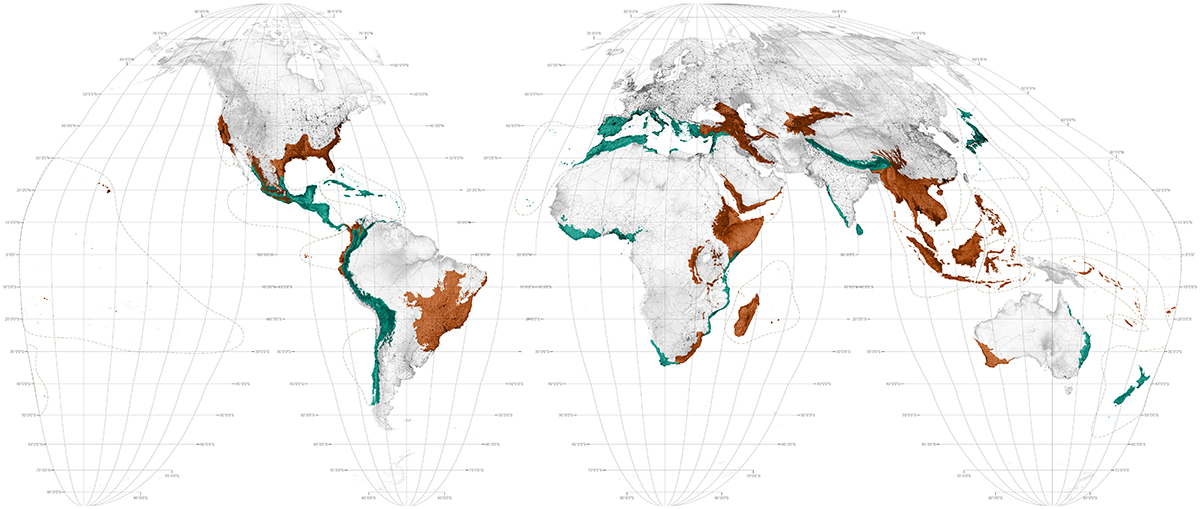
As indicated in green on the map above, as of 2015 when our analysis was conducted only 14 of the 36 hotspots have 17% or more terrestrial protected area (IUCN categories I-VI plus NA lands). Furthermore, as shown on the map below only 170 of the 391 ecoregions which constitute the hotspots have 17% of their land mass secured as protected area.
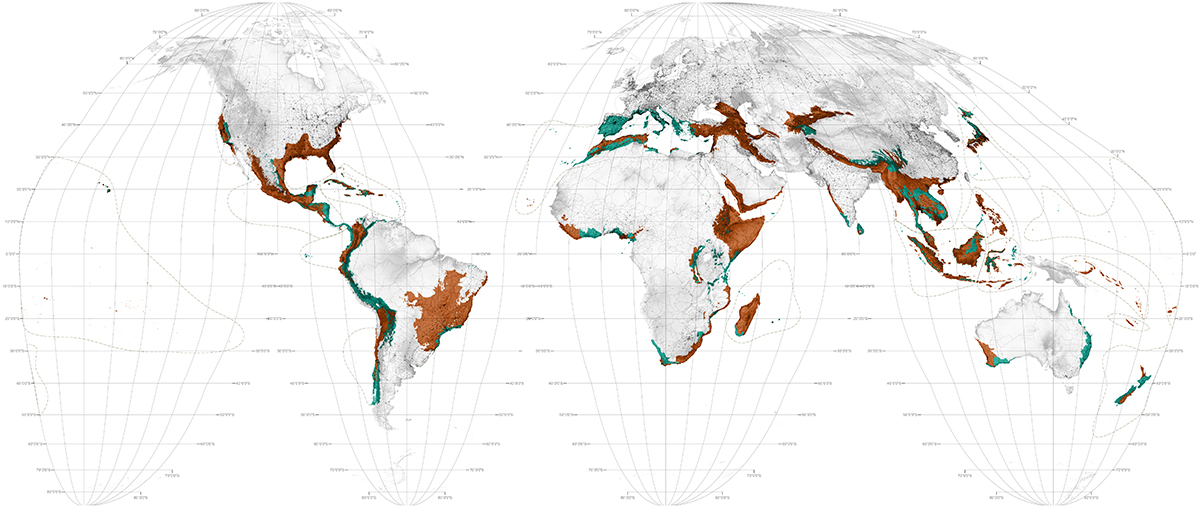
On our ecoregion maps which follow each of the hotspot maps, in comparison to the amount of existing protected area in each ecoregion, we highlight the amount of land that is neither protected nor evidently subject to intensive agricultural crop production. These extensive (light green) areas are lands that Erle Ellis refers to as "the remnant, recovering, and managed novel ecosystems formed by land use and its legacies … the predominant form of terrestrial ecosystems today and into the future."72 It is in these weedy, feral territories, much of it probably used as grazing rangelands which have both low biodiversity and low agricultural value that the fate of much of the world's biodiversity will ultimately be decided. These are the degraded lands into which biodiversity is being forced and across which connectivity must be established if the adaptation of species to climate change is going to be facilitated. These are also lands likely to face increasing pressure from the world's ever expanding agricultural frontier.
On Mapping
In his sweeping historical survey of mapping Cartographia Vincent Virga explains that maps are by definition "a selective graphic representation, implying that the cartographer exercises a certain amount of judgment and bias, no matter how scientific the presentation purports to be."73 Through examples Virga identifies no less than 134 different polemical purposes to which maps have lent themselves over time. These range from "map as subversive urban utopia" to "map as permutations of desire" to "map as nation's psyche" and so on. Remarkably however, of the 134 ideological map types he identifies and the 201 maps shown as evidence, only one—a map of a small part of the Great Barrier Reef in Australia—is even remotely environmental in purpose.
In this sense, Varga's taxonomy, much like a map itself, is revealing for what it leaves out. The point is not so much that the ecological crisis, surely one of the preeminent subjects of our times, is under represented in Varga's account of cartographic history, but rather that, when put together, history's maps seem to have inexorably led us so boldly and blindly into today's crisis. The deeper question this Atlas for the End of the World asks then, is whether new maps can possibly get us out?
In his book To the Ends of the Earth: 100 Maps that Changed the World Jeremy Harwood makes up for the environmental lacuna in Varga's survey by devoting the last 4 of his 100 selections to the late 20th century digital revolution in cartography. Over 2000 satellites now whirl silently (at 28,000 km per hour) around the earth, fixing virtually everything in their electromagnetic, pixelated gaze.

This immense and ever-expanding trove of remotely sensed data and imagery is the basis of the world's shared Geographic Information Systems (GIS). The subject of this cyborgian, perpetual mapping-machine is not only where things are in space, but more importantly how things change over time. Because the environmental crisis is generally a question of understanding what is changing where, we can say that with remote sensing and its data-streams we have entered not only the apocalyptic age of star wars and the white-noise world of global telecommunications, but more optimistically, the age of ecological cartography.
The "judgment and bias" of this atlas lies firstly in our acceptance of the public data as a given; secondly in the utilization of GIS to rapidly read and translate metadata as a reasonable basis for map-making in the age of ecological cartography; thirdly, in our foregrounding of each map's particular theme to the exclusion of all others; and finally in the way that a collection of ostensibly neutral and factual maps is combined to form an atlas that, by implication, raises prescient questions of land-use on a global scale.
1 Dan Brockington, Rosaleen Duffy, & Jim Igoe, Nature Unbound: Conservation, Capitalism and the Future of Protected Areas (London: Earthscan, 2008), 18.
2 In 1988, Norman Myers first identified 10 global hotspots featuring exceptional concentration and endemism of plant species under unusual threat of destruction. According to Myers, E.O. Wilson has said hotspots were "the most important contribution to conservation biology of the last century". As found in Norman Myers & Russell A. Mittermeier, "Impact and Acceptance of the Hotspots Strategy: Response to Ovadia and to Brummitt and Lughadha," Conservation Biology 17, no. 5 (2003): 1449-1450. There are now 36 recognized hotspots. Together, these areas contain at least 50% of the world's total plant species and 42% of the world's terrestrial vertebrates as endemic. The original and unique habitat in these hotspots is at least 70% depleted and is under imminent threat of total destruction due to habitat fragmentation related to urbanization, agriculture, and related economic activities. Originally representing 16% of the Earth's surface, (excluding the 35th hotspot in North Eastern Australia which was added in 2010 and the 36th hotspot of the North American Coastal Plain which was added in 2016) the unique habitat of the hotspots has diminished to just 2.3%. As found in Russell A. Mittermeier, et al., Hotspots Revisited: Earth's Biologically Richest and Most Endangered Terrestrial Ecoregions (Washington DC: Conservation International and Cemex, 2004).
3 D. Juffe-Bignoli, et al., "Protected Planet Report 2014," International Union for Conservation of Nature (June 1, 2016), https://www.iucn.org/content/protected-planet-report-2014.
4 International Union for Conservation of Nature, "Protected Areas Categories," http://www.iucn.org/theme/protected-areas/about/categories (accessed June 1, 2016). The definition of what constitutes a protected area is complicated and varied. The Aichi targets generally refer to the International Union for Conservation of Nature's (IUCN) seven categories of protection, each involving different degrees of human accessibility and use. These are 1a: Strict Nature Reserves; 1b: Wilderness Areas; 2: National Park; 3: National Monument or Feature; 4: Habitat/Species Management Areas; 5: Protected landscape/seascape (modified landscapes of cultural ecological and scenic value); and 6: Protected Areas with Sustainable use of natural resources. From a biodiversity conservation perspective, categories 1-4 are preferred.
5 Rem Koolhaas, "Forward," in [Stephan Fussel] (ed.) Cities of the World — Complete Edition of the Colour Plates 1572-1617 (Civitates Orbis Terrarum) (Taschen, 2008), 6-7.
6 Ibid.
7 Herbert Girardet, Creating Sustainable Cities (United Kingdom: Green Books, 1999), 17.
8 Thomas Elmqvist, et al., "Stewardship of the Biosphere in the Urban Era," in [Thomas Elmqvist, et al.] (eds) Urbanization, Biodiversity and Ecosystem Services: Challenges and Opportunities (Dordrecht, Netherlands: Springer, 2013), 750.
9 Neil Brenner & Christian Schmid, "Planetary Urbanization," in [Matthew Gandy] (ed.) Urban Constellations (Berlin: Jovis Verlag, 2011), 12.
10 Ibid.
11 See for example Carolyn Merchant, The Death of Nature (1983); Bill McKibben, The End of Nature (1989); Alexander Wilson, The Culture of Nature (1991); Kate Soper, What is Nature (1995); Stephen Meyer, The End of the Wild (2006); Paul Wapner, Living Through the End of Nature (2013); and Jedediah Purdy, After Nature: A Politics of the Anthropocene (2015).
12 Christophe Bonneuil, "The geological turn: narratives of the Anthropocene," in [Clive Hamilton, Christophe Bonneuil, & François Gemenne] (eds) The Anthropocene and the Global Environmental Crisis: Rethinking modernity in a new epoch (London: Routledge, 2015), 26.
13 Edward O. Wilson, The Creation: An Appeal to Save Life on Earth (New York: W. W. Norton & Company, 2006), 113.
14 Lynn Margulis & Dorion Sagan, Dazzle Gradually: Reflections on the Nature of Nature (Vermont: Chelsea Green Publishing, 2007), 221.
15 Robert E. Cook, "Do Landscapes Learn? Ecology’s 'New Paradigm' and Design in Landscape Architecture," in [Michel Conan] (ed.) Environmentalism in Landscape Architecture (Washington, DC: Dumbarton Oaks Research Library and Collection, 2000), 121.
16 Jedediah Purdy, "Anthropocene Fever," aeon (March 31, 2015), https://aeon.co/essays/should-we-be-suspicious-of-the-anthropocene-idea.
17 Wildlands Network, "Wildlands Network," http://www.wildlandsnetwork.org (accessed).
18 James B. MacKinnon, The Once and Future World: Nature as it Was, as it Is, as it Could be (Boston & New York: Houghton Mifflin Harcourt, 2013), 114.
19 Zuzanna Drodz, "Condemned to Art: Culture Making in Response to Ecological Crisis," unpublished essay (University of Pennsylvania, 2014).
20 Anthropogenic Landscape Ecology, "Anthromes," http://ecotope.org/anthromes/ (accessed June 1, 2016).
21 Erle C. Ellis, "Using the Planet," Global Change 81 (2013), 32-35.
22 Erle C. Ellis, "Anthropogenic Taxonomies: A Taxonomy of the Human Biosphere," in [Chris Reed & Nina-Marie Lister] (eds) Projective Ecologies (New York: Actar, 2014), 179.
23 Oliver Morton, The Planet Remade: How Geoengineering Could Change the World (Princeton: Princeton University Press, 2015), 24.
24 An Ecomodernist Manifesto, "Manifesto," http://www.ecomodernism.org/manifesto-english/ (accessed June 1, 2016). The authors of the manifesto are John Asafu-Adjaye, University of Queensland; Linus Blomqvist, Breakthrough Institute; Stewart Brand, Long Now Foundation; Barry Brook, University of Tasmania; Ruth DeFries, Columbia University; Erle Ellis, University of Maryland, Baltimore County; Christopher Foreman, University of Maryland School of Public Policy; David Keith, Harvard University School of Engineering and Applied Sciences; Martin Lewis, Stanford University; Mark Lynas, Cornell University; Ted Nordhaus, Breakthrough Institute; Roger Pielke, Jr., University of Colorado, Boulder; Rachel Pritzker, Pritzker Innovation Fund; Joyashree Roy, Jadavpur University; Mark Sagoff, George Mason University; Michael Shellenberger, Breakthrough Institute; Robert Stone, Filmmaker; Peter Teague, Breakthrough Institute.
25 Ibid.
26 Edward O. Wilson, Half-Earth: Our Planet's Fight for Life (Liveright, 2016).
27 Clive Hamilton, "The Anthropocene as rupture," The Anthropocene Review 3, no. 2 (2016): 93-106.
28 Clive Hamilton, "Human destiny in the Anthropocene," in [Clive Hamilton, Christophe Bonneuil, & François Gemenne] (eds) The Anthropocene and the Global Environmental Crisis: Rethinking modernity in a new epoch (London: Routledge, 2015), 42.
29 James Lovelock, The Ages of Gaia: A Biography of Our Living Earth (London: W. W. Norton, 1988), 228.
30 Ibid., 171.
31 Ian L. McHarg, Design with Nature, 25th Anniversary ed. (New York: John Wiley and Sons, 1992), 124.
32 Ibid. In his magnum opus, Design with Nature, McHarg refers repeatedly to the ideal human as the "good steward".
33 Daniel H. Janzen, "Gardenification of Wildland Nature and the Human Footprint," Science 279 (1998): 1312-1313.
34 Ibid., 171.
35 Área de' Conservación Guanacaste, http://www.acguanacaste.ac.cr (accessed June 1st, 2016).
36 Daniel H. Janzen, "Gardenification of Wildland Nature and the Human Footprint," Science 279 (1998): 1312-1313.
37 Daniel Janzen & Winnie Hallwachs, "In Conversation with Dan Janzen & Winnie Hallwachs," in [Tatum Hands] (ed.) LA+ Wild (2015): 21-24.
38 Peter Kareiva, Michelle Marvier, & Robert Lalasz, "Conservation in the Anthropocene: Beyond Solitude and Fragility," The Breakthrough, no. 2 (2012), http://thebreakthrough.org/index.php/journal/past-issues/issue-2/conservation-in-the-anthropocene (accessed September 25, 2015).
39 Ibid.
40 Ibid.
41 Ibid.
42 United Nations Environment Programme, "New UNEP Report Unveils World on Track to Meet 2020 Target for Protected Areas on Land and Sea," United Nations Environment Programme (UNEP) News Centre (November 13, 2014), http://www.unep.org/newscentre/Default.aspx?DocumentID=2812&ArticleID=11070 (accessed June 1, 2016).
43 Ibid.
44 The definition of what constitutes a protected area is complicated and varied. The Aichi targets generally refer to the International Union for Conservation of Nature's (IUCN) seven categories of protection, each involving different degrees of human accessibility and use. These are 1a: Strict Nature Reserves; 1b: Wilderness Areas; 2: National Park; 3: National Monument or Feature; 4: Habitat/Species Management Areas; 5: Protected landscape/seascape (modified landscapes of cultural ecological and scenic value); and 6: Protected Areas with Sustainable use of natural resources. From a biodiversity conservation perspective, categories 1-4 are preferred.
45 International Union for Conservation of Nature, "Protected Areas Categories," http://www.iucn.org/theme/protected-areas/about/categories (accessed June 1st, 2016).
46 Brockington, Nature Unbound, 49.
47 Bram Büscher, Wolfram Dressler, & Robert Fletcher, Nature™ Inc.: Environmental Conservation in the Neoliberal Age (Tucson: University of Arizona Press, 2014), 13.
48 Ibid., 5.
49 Page West, Conservation is Our Government Now: The Politics of Ecology in Papua New Guinea (Durham: Duke University Press, 2006).
50 Mark Dowie, Conservation Refugees: The Hundred Year Conflict Between Global Conservation and Native Peoples (Cambridge: The MIT Press, 2011).
51 Ibid., xix.
52 Secretariat of the Convention on Biological Diversity, Global Biodiversity Outlook 4 (Montréal, 2014), 134.
53 Convention on Biological Diversity, "Aichi Biodiversity Targets," https://www.cbd.int/sp/targets/ (accessed June 1, 2016).
54 Ibid.
55 Convention on Biological Diversity, "National Biodiversity Strategies and Action Plans (NBSAPSs)," https://www.cbd.int/nbsap/default.shtml (accessed June 1, 2016).
56 Convention on Biological Diversity, "Aichi Biodiversity Targets," https://www.cbd.int/sp/targets/ (accessed June 1, 2016) See Aichi targets 11 and 15.
57 The BINGOs are Conservation International (CI), The Nature Conservancy (TNC), The Worldwide Fund for Nature (WWF), The African Wildlife Foundation (AWF), and The Wildlife Conservation Society (WCS).
58 See Convention on Biological Diversity, "Quick Guides for the Aichi Biodiversity Targets," https://www.cbd.int/nbsap/training/quick-guides/ (accessed June 1, 2016).
59 See Graeme Worboys, Wendy L. Francis, & Michael Lockwood (eds) Connectivity Conservation Management: Global Guide (London: Earthscan, 2010), and Jack Ahern, "Greenways as a Planning Strategy," in [Julius G. Fabos & Jack Ahern] (eds) Greenways: The Beginning of an International Movement (Amsterdam: Elsevier, 1996), 131-155.
60 Rob Jongman & Mation Bogers, "Current status of the practical implementation of ecological networks in the Netherlands," European Centre for Nature Conservation (2008), http://www.ecologicalnetworks.eu/documents/publications/ken/NetherlandsKENWP2.pdf.
61 In their NBSAPs the following nations offer some indication of planning for biodiversity taking spatial form: Albania, Belize, Bosnia and Herzegovina, Cameroon, El Salvador, Equatorial Guinea, Ghana, Jordan, Liberia, Luxembourg, Mexico, Morocco, Myanmar, Norway, Philippines, Saint Kitts and Nevis, Togo, India, Laos, Brazil, Sudan, Palau, Papua New Guinea, Bolivia, Peru, Nicaragua, Georgia.
62 Terrestrial protected area coverage has increased by about one million square kilometers since 2010, and 126,000 square kilometers since 2012. See Juffe-Bignoli, "Protected Planet Report 2014," 8.
63 Ana S. L. Rodrigues, et al., "Effectiveness of the global protected area network in representing species diversity," Nature 428 (2004): 640-643.
64 Juffe-Bignoli, "Protected Planet Report 2014," iii.
65 Secretariat of the Convention on Biological Diversity, Global Biodiversity Outlook 4 (Montréal, 2014), 134.
66 Ibid., 83.
67 Mittermeier, Hotspots Revisited, 11, 37.
68 Ibid., 29.
69 These figures are from Mittermeier, Hotspots Revisited, hence they do not include the 35th designated hotspot Forests of East Australia which was added in 2010 and the 36th hotspot of the North American Coastal Plain which was added in 2016.
70 Mittermeier, Hotspots Revisited, 37.
71 Larry J. Gorenflo, et al., "Co-occurrence of Linguistic and Biological Diversity in Biodiversity Hotspots and High Biodiversity Wilderness Areas," Proceedings of the National Academy of Science 109, no. 21 (2012): 8032-8037. This figure includes areas of 'high biodiversity wilderness' in addition to the hotspots.
72 Ellis, "Anthropogenic Taxonomies," 179.
73 Vincent Virga & the Library of Congress, Cartographia: Mapping Civilizations (New York: Little Brown and Company, 2007), 3.
Citation: Richard J. Weller, "Atlas for the End?" in Richard J. Weller, Claire Hoch, and Chieh Huang, Atlas for the End of the World (2017), http://atlas-for-the-end-of-the-world.com.